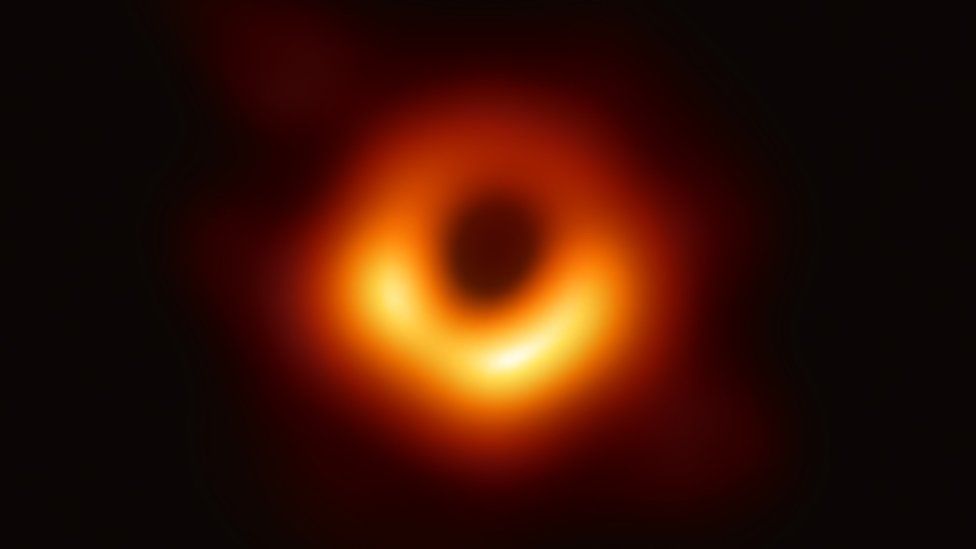Image source, EHT
Scientists say they have solved one of the biggest paradoxes in science first identified by Prof Stephen Hawking.
He highlighted that black holes behave in a way that puts two fundamental theories at odds with each other.
Black holes are dead stars that have collapsed and have such strong gravity that not even light can escape.
New research claims to have resolved the paradox by showing that black holes have a property which they call “quantum hair”.
“The problem has been cracked!” Prof Xavier Calmet of the University of Sussex, told BBC News exclusively, with much satisfaction. He was among those who developed the mathematical techniques they say has solved the paradox.
At the heart of the paradox is a problem which has threatened to undermine two of physics most important theories. Einstein’s general theory of relativity says information about what goes into a black hole cannot come out, but quantum mechanics says that is impossible.
Prof Calmet and his colleagues say they have shown that the constituents of the star leave an imprint in the black hole’s gravitational field.
The scientists named the imprint “quantum hair” because their theory supersedes an earlier idea called the “no hair theorem” developed by Prof John Archibald Wheeler of Princeton University in New Jersey in the 1960s.

Image source, BBC/Richard Ansett
Prof Wheeler came up with the name because it conveys the mathematical description of a black hole: an entity which has mass, spin and charge but is otherwise has no other physical features, bald if you like.
Prof Calmet’s “yes hair theorem”, published in the journal Physical Review Letters is revolutionary. It claims to resolve the Hawking paradox which has deeply troubled physicists ever since Prof Hawking came up with it in the 1970s.
The paradox raised the possibility that either quantum mechanics or general relativity might be flawed, which is a terrifying prospect for theoretical physicists because they are the twin pillars on which most most of our understanding of the Universe rests.

Image source, DR JEAN LORRE/SCIENCE PHOTO LIBRARY
The “yes hair theorem” claims to resolve the paradox by bridging the gap between general relativity and quantum mechanics. The notion of quantum hair allows information about what goes into a black hole to come out again without violating any of the important principles of either theory. It is a simple and elegant solution.
“But it is going to take some time for people to accept it,” says Prof Calmet.
That is because it is such a big deal in the world of theoretical physics.
“Hawking came up with the paradox in the year that I was born,” says Prof Calmet.
Ever since then, many famous physicists around the world have been working on it, proposing very dramatic things to explain it, including some who had suggested that some aspects of quantum mechanics is wrong.
“So it is going to take a while for people to accept that you don’t need a radical solution to crack the issue,” Prof Calmet said.
If the “yes hair theorem” stands up to scrutiny, he said it could be the first step in connecting the theories of relativity – which concern gravity and quantum mechanics which largely focus on the three other forces of nature, which are electromagnetism and two nuclear forces.
“One of the consequences of the Hawking paradox was that general relativity and quantum mechanics was incompatible. What we are finding is that they are very much compatible.”
The research team, which also includes Prof Roberto Casadio of the University of Bologna and Prof Stephen Hsu from Michigan State University, built on the work of Prof Suvrat Raju of the International Centre for Theoretical Sciences, in Bengaluru in India. Prof Raju believes that together they have solved the Hawking paradox.
“In the past few years, it has been recognized that the no hair theorem fails due to quantum effects and this resolves Hawking’s paradox,” he said.
Follow Pallab on Twitter



























